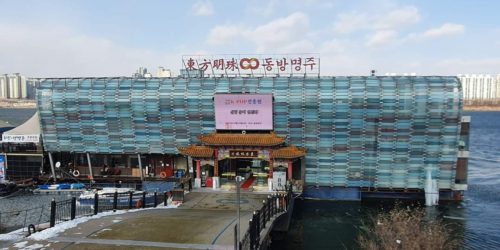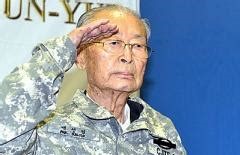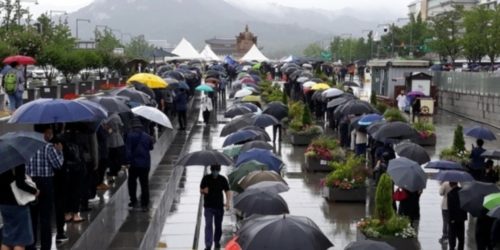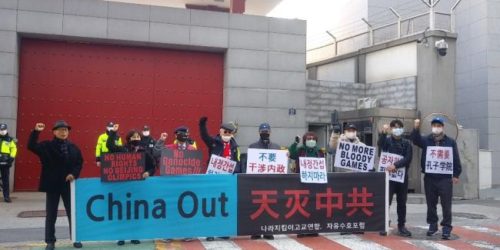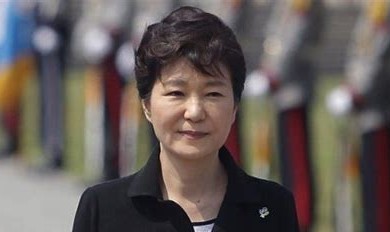Moon Jae-in & Pesca Mar Mutiny: Moon Defended Chinese who Murdered Ship’s Crew
2021-6-13, Tara O
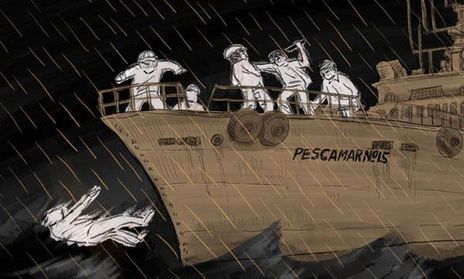
When describing President Moon Jae-in, one of the descriptions that commonly precedes his name is “human rights lawyer.” Hardly anything is known about what he exactly did to earn that label. Certainly, it is not based on his recent actions, such as engaging in court battles against citizens for calling him a communist or placing posters criticizing him or challenging him for an unlawful firing from public broadcaster KBS. The Moon administration also has a poor track record on North Korean human rights issues, including forced repatriation of 2 North Korean defectors to North Korea, where deaths awaited them. So what kind of law did Moon practice? For one, Moon Jae-in practiced criminal law, defending 6 Chinese crew members who brutally murdered 11 of their shipmates in 1996 aboard the Pesca Mar (페스카마호) #15.
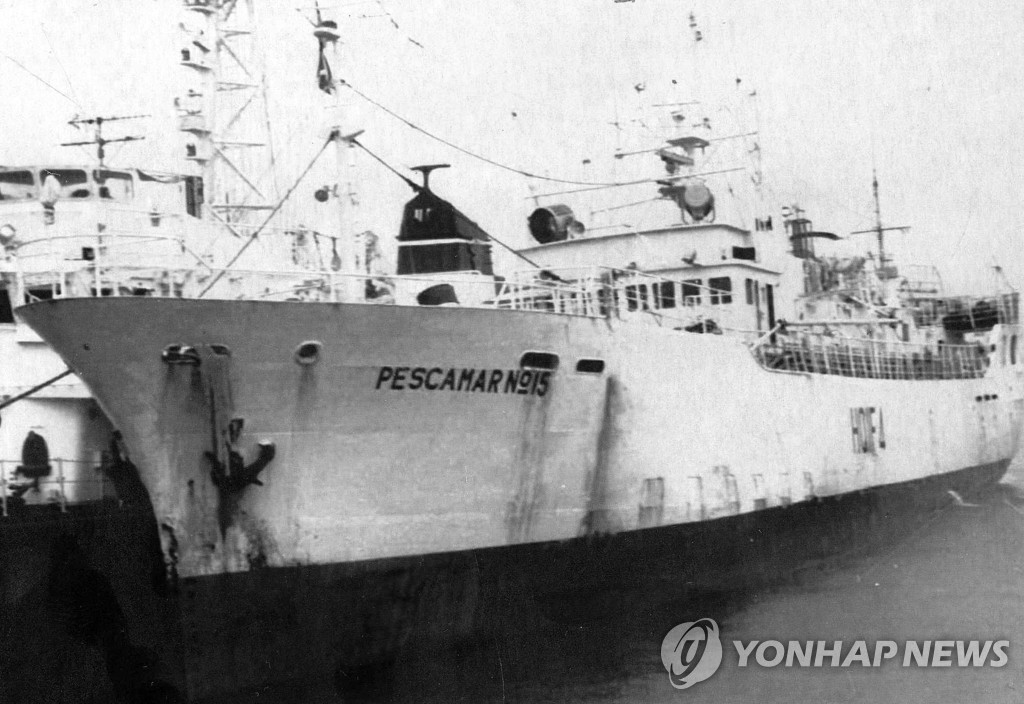
On August 2, 1996, six of the Chinese crew members on the Pesca Mar, which was fishing near the Samoan Islands in the South Pacific, savagely murdered 11 crew members—7 South Koreans, 3 Indonesians, and 1 Chinese. They stabbed, axed, cut, and/or beat them one by one, and tossed them overboard, many of whom were still alive when thrown into the shark-infested ocean. Pesca Mar 15 was a 254-ton ocean-going vessel that had a crew that eventually totaled 24—8 Koreans (including the captain), 9 Indonesians, and 7 Chinese of Korean ethnicity referred to as the “Joseon-jok” (조선족). When Pesca Mar 15 left Busan on June 7, 1996, it left with a crew of 17—7 South Koreans and 10 Indonesians. On June 14, the Pesca Mar picked up 7 Chinese from Tinian, one of Northern Mariana Islands, and after two days of rest, left Tinian on June 16. The seven Chinese added to the ship’s crew were Quan Zaiqian (全在千, 전재천· 39), Park Junnan (朴君男, 박군남·33), Cui Jinhao (崔錦浩, 최금호·31), Cui Rikui (崔日奎, 최일규·31), Li Chunsheng (李春勝, 이춘승·33), Bai Zhongfan (白忠范, 백충범·32), Cui Wanfeng (崔萬奉, 최만봉·30 at the time of death). Quan was the Second Officer. During fishing operations, 1 Indonesian transferred to another ship at sea, while an 18-year old (19-years in Korean age) Korean apprentice with appendicitis was transferred on board as the ship was heading ashore to drop off the Chinese crew, who had been troublesome. [Note: “Korean age” is 1 to 2 years more than the “American age.” All other ages are in “Korean ages.”] They headed to the waters near Phoenix Island and began fishing on June 27.

August 2, 1996, 3 a.m., the murder of Choi Ki-taek, Captain
Six of the Chinese crew, led by Quan Zaiqian, planned and carried out the gruesome murders. The first victim was the ship’s captain Choi Ki-taek (최기택) (33). On August 2, 1996, around 3 a.m., they lured sleeping Choi from his quarters to the wheelhouse by waking him up to tell him that there was a call from the shipping company. One woke him, two stood guard in the hall way, and three were in the wheelhouse waiting for Choi. When Choi entered the wheelhouse, one locked the door to prevent his escape, one stabbed his stomach with a harpoon, another stabbed his knee with a knife, and yet another stabbed him in behind his neck, killing the captain. They then tossed his body overboard.
The murder of Kang In-ho (강인호), Boatswain (Deckmaster)
About 30 minutes later, they lured Kang In-ho (강인호) (33), Boatswain to the wheelhouse, telling him that the captain is looking for him. They stabbed him with a harpoon, and struck his neck with an axe. They threw him over board as well. It appeared Kang was still alive when thrown.
The Confinement of Lee In-seok (이인석), (27), Navigator
At about 4 a.m., they lured Lee In-seok, but they did not kill him, because they needed someone to navigate the ship. They beat him first, then tied him with a rope and put him in storage. While beating him, they told him, “the captain and the deckmaster are playing with the sharks now. Don’t resist, and just do what we tell you.”
The murder of Park Jong-seung (박종승) (32) (Engineer)
Around 4:20 a.m., they lured out Park and then kicked him down the stairs, stabbed him in the chest and thighs repeatedly, and tossed him overboard while Park pleaded with them to not kill him.
The murder of Kim Chang-yul (김창열) (36), First Officer
The next victim was Kim Chang-yul. Around 4:40 a.m., they headed for Kim’s quarters. Unlike the others, Kim spotted the attackers first, and tried to run away, but was caught. The assailants stabbed Kim near his ribs and tried to toss him overboard. When Kim held onto the railing, pleading with them, they cut the back of Kim’s hands and unwound his fingers and kicked his hands, so that Kim could not hang on and he fell into the ocean.
The murder of Suh Jang-ju (서장주) (45), Cook
Around 5 a.m., the perpetrators beat Suh Jang-ju, the cook. Suh tried to run away, but was hit with a metal rod, and tossed overboard right away.
The murder of Kim Shin-il (김신일) (43), Chief Engineer
About 20 minutes later, the murderers pursued Kim Shin-il. They kicked him and tossed him overboard, while he was pleading with them not to do so.
The murder of Choi Dong-ho (최동호) (19), Intern (being evacuated for appendicitis)
Some of the Indonesian crew—Perry, York, and Sunda—hearing Kim’s screams, came out and witnessed the heinous murders. The perpetrators decided to make them accomplices by having them carryout murder. After Choi Dong-ho was lured out, the Chinese partakers ordered the Indonesians to throw Choi, who is ill with appendicitis, overboard, at knife points. Choi, an intern, boarded Pesca Mar to be evacuated to shore at 12:30 a.m., just 2 ½ hours before the first murder began. According to Sunda’s testimony, the young intern, seeing the hostile scene, realized what was about to happen and seemed resigned, and held the rail with both hands, with his back toward the railing, and stared blankly, until his body was lifted and tossed overboard.
The murder of Cui Wanfeng (30) and three Indonesian crew
After killing 7 Korean crew, the murderers turned their attention to the 1 Chinese and 3 Indonesians—Lulop (루롭), Rosadi (로사디), Leta (레타)—who did not partake in their heinous acts. The 4 are put into the fish refrigerator to be frozen to death. They were still alive when checked, because the refrigerator was not working. Realizing this, the perpetrators kept the four there longer—for 5 days—until they lost their energy to resist. The attackers then beat the weakened men and tossed them overboard while they were still alive.
Thus a total of 11 crew members were murdered. To cover up the crime, the assailants threw their weapons into the sea and erased the bloodstains in the vessel using magnifying glasses, and cut the wires to the radios to disable communications.
How they got caught
The perpetrators gathered navigator Lee In-seok and the six Indonesians into the wheelhouse to tell them that Quan and his group is in charge, and they headed toward Japan. Quan et. al. planned to sell the ship and head to Japan, and made two wooden rafts big enough for only six people. Lee and the Indonesians sensed the rafts were not for them, and that they too would get killed. About 20 days later, Lee and the Indonesian crew lured and locked up the Chinese perpetrators in the fish refrigerator. The next day on August 24, the Japanese Coast Guard discovered the Pesca Mar, and turned over the ship and the crew to South Korea.
Moon Jae-in and the Pesca Mar trials
This case shocked and enraged Koreans. On December 24, 1996, the six were found guilty and sentenced to death at a court in Busan. By then, South Korea no longer carried out death sentences. Moon Jae-in, who was the representative in Busan and the South Gyeongsang Province branch of MinByun (a group of lawyers on the Left), then became their lawyer and appealed the case. Moon argued their ghastly acts were “accidental” (우발적), rather than premeditated. Moon also gave the perpetrators money and flew their families to South Korea from China. On April 18, 1997, the sentences for five of the murderers were reduced to life-sentences instead, and this decision was upheld by the Supreme Court. On December 31, 2007, then-president Rho Moo-hyun commuted the sentence of Quan, the leader of the murderers, to life-imprisonment, and Moon Jae-in, Rho’s Chief of Staff at that time, stated “Since Quan is now also sentenced to life in prison due to a special commutation, (my) pleadings came to fruition.” In 2011 when Moon Jae-in was the head of the Rho Moo-hyun Foundation, Moon also stated, “The perpetrators of the Pesca Mar incident should also be embraced warmly as compatriots (동포), and I have not changed my mind even now.”
The Two North Korean Defectors Repatriated by Force
Fast forward to November 2019. The Moon administration forcibly repatriated two fishermen defectors to North Korea to their certain deaths, which garnered world condemnation. Without any investigations, the Moon government claimed that the two defectors “killed the captain” and “killed the other protesting crew members, one by one,” throwing their bodies overboard. This narrative, which many defectors say is false, is eerily similar to the Pesca Mar mutiny and murder case that Moon represented as a lawyer. According to Dr. Lee Ae-ran, a defector who has access to news from North Korea, the two young men were not vicious criminals as claimed by the Moon administration, but actually tried to help 16 North Koreans escape, when they themselves were at risk of being arrested by the North Korean security agency, which is why they hurriedly escaped North Korea. She lamented the 2 defectors’ plight and criticized the Moon administration for violating the South Korean constitution and international law, particluarly human rights.
No More “human rights lawyer” in front of “Moon Jae-in”
As the tragedies of the Pesca Mar and the devastation of the two defectors forcibly returned to North Korea show, one wonders which side of human rights Moon Jae-in is really on, and whether the title “human rights lawyer” really should precede his name.
